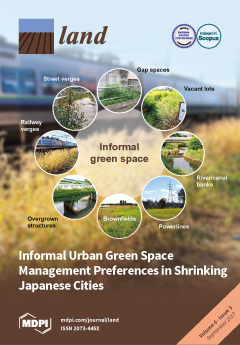urbanization
AGROVOC URI: http://aims.fao.org/aos/agrovoc/c_8088
African compendium of environment statistics 1995 = Recueil des statistiques africaines de l'environnement
This series of African compendium of environment statistics, presents environmental and environment –related data for the African region.
Report on human settlements : African regional implementation review for the Commission on Sustainable Development (CSD-12)
Africa is the fastest urbanizing region in the world, with the population doubling almost every
20 years. The rural population is growing at a rate of 2.5 per cent per annum, while the urban
population is experiencing 5-10 per cent growth per annum. Urbanization becomes a source
of concern when the challenges it poses are far beyond the national management capacity.
African compendium of environment statistics 1991 = Recueil des statistiques africaines de l'environnement 1991
This document focuses on African compendium of environment statistics 1991. The topics covered in this edition include population density, land use, irrigation, round wood production, agro climatologically conditions, urbanization and disasters related to the environment.
Africain compendium of environment statistics = Recueil des statistique Africaines de l'environnent
This document focuses on African compendium of environment statistics. This is the first edition of the African Compendium of Environment Statistics. It is in many ways experimental and covers a limited range of topics but it is intended that future editions will cover a wider range of data and will include more comment and analysis. Environment statistics is a relatively new branch of statistics and very few African countries have yet started systematic data collection or have any statisticians trained in this branch.
Comparing Quantity, Allocation and Configuration Accuracy of Multiple Land Change Models
The growing numbers of land change models makes it difficult to select a model at the beginning of an analysis, and is often arbitrary and at the researcher’s discretion. How to select a model at the beginning of an analysis, when multiple are suitable, represents a critical research gap currently understudied, where trade-offs of choosing one model over another are often unknown. Repeatable methods are needed to conduct cross-model comparisons to understand the trade-offs among models when the same calibration and validation data are used.
The Dynamics of Urban Land Rent in Italian Regional Capital Cities
This research tries to interpret the results of the empirical analysis of urban land value variations from 1977 to 2012 in the regional Italian capital cities based on the well-known theory of urban land rent. The historical series to be analyzed were obtained as the difference between the market value of a property and its cost of production. The paper shows, in quantitative terms, how differential and absolute rents will be translated into the dynamics of land values in relation to local specificities.
Flood Hazard Mapping of a Rapidly Urbanizing City in the Foothills (Birendranagar, Surkhet) of Nepal
Flooding in the rapidly urbanizing city of Birendranagar, Nepal has been intensifying, culminating in massive loss of life and property during July and August 2014. No previous studies have monitored underlying land-cover dynamics and flood hazards for the area. This study described spatiotemporal urbanization dynamics and associated land-use/land-cover (LULC) changes of the city using Landsat imagery classifications for five periods between 1989 and 2016 (1989–1996, 1996–2001, 2001–2011, 2011–2016).
Land Use Changes in Iberian Peninsula 1990–2012
This work aims to provide a comprehensive, wall-to-wall analysis of land use/cover changes in the continental areas of Portugal and Spain between 1990 and 2012. This overall objective is developed into two main research questions: (1) Whether differences between the extent and prevalence of changes exist between both countries and (2) which are the hotspots of change (areas where a given land use/cover transition dominates the landscape) in each country.
Assessment of Land Cover Changes in the Hinterland of Barranquilla (Colombia) Using Landsat Imagery and Logistic Regression
Barranquilla is known as a dynamically growing city in the Colombian Caribbean. Urbanisation induces land use and land cover (LULC) changes in the city and its hinterland affecting the region’s climate and biodiversity. This paper aims to identify the trends of land use and land cover changes in the hinterland of Barranquilla corresponding to 13 municipalities in the north of the Department Atlántico. Landsat TM/ETM/OLI imagery from 1985 to 2017 was used to map and analyse the spatio-temporal development of land use and land cover changes.
Agricultural Land Conversion, Land Economic Value, and Sustainable Agriculture: A Case Study in East Java, Indonesia
Agricultural land conversion (ALC) is an incentive-driven process. In this paper, we further investigate the inter-relationship between land economic value (LEV) and ALC. To achieve this goal, we calculated the LEV for agricultural and non-agricultural (housing) uses in two areas of East Java, Indonesia. The first area represents peri-urban agriculture, which is facing rapid urbanization and experiencing a high rate of ALC. The second area represents rural agriculture, with zero ALC. Furthermore, we identified factors affecting LEV in both areas for both uses.
Changes in Land Cover and Urban Sprawl in Ireland From a Comparative Perspective Over 1990–2012
In this article, we first summarise trends of land use changes and urbanisation in Ireland since 1990 using data from the Corine Land Cover program. In doing so, we compare the developments in Ireland with other European countries. Second, we propose a statistical test for the presence of sprawl using conditional and unconditional convergence tests. The two-part empirical analysis allows us to establish that Ireland has experienced a substantial loss of non-urban land in recent decades.






